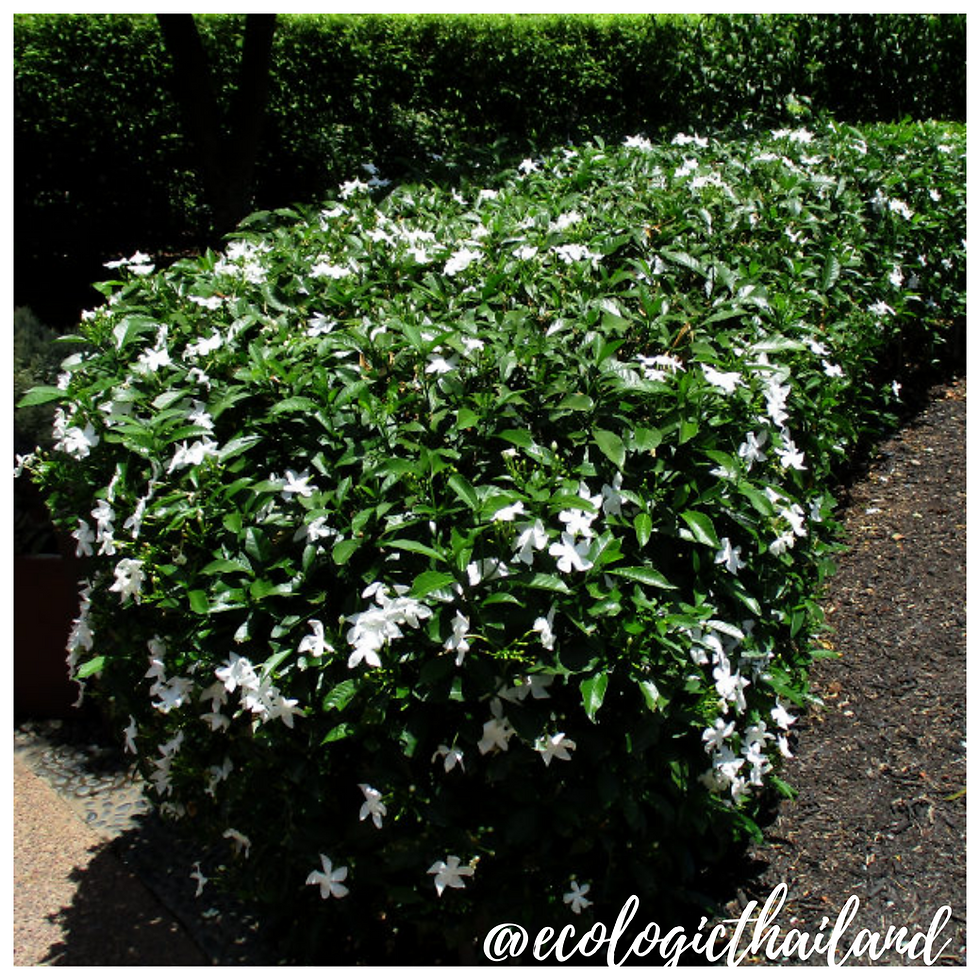Miracle berry
- Eco-Logic Resort
- Jan 18, 2021
- 2 min read
Ton Masgraay | ต้นมหัศจรรย์ | Synsepalum dulcificum
Family: Sapotaceae - Genus: Synsepalum

The miracle berry shrub can be found near some houses in Paksong area.
The miracle berry is also know as miracle fruit, sweet berry, This evergreen shrub produces small, red berries, while white flowers are produced for many months of the year. It is known for its berry that, when eaten, causes sour foods (such as lemons and limes) subsequently consumed to taste sweet.
The berry itself has a low sugar content and a mildly sweet tang. It contains a molecule, called miraculin. When the fleshy part of the fruit is eaten, this molecule binds to the tongue's taste buds, causing sour foods to taste sweet. This effect lasts until the protein is washed away by saliva (up to about 30 minutes).
The Miracle Berry first bear fruit after growing about 3–4 years, and produce two crops per year, after the end of the rainy season.

THE PLANT
This small, evergreen plant grows very slowly to a height of 3 to 5 meter.
It is an oval to pyramidal shaped bush or small tree.

THE LEAVES
The simple leaves of the Miracle Berry are oval and tapering at the base with smooth margins and feature a waxy underside; they grow in spire like clusters at the ends of small branches.

THE FLOWERS
The Miracle Berry has small brown and white flowers of about 1 cm.

THE BERRIES
The flowers of the Miracle Berry are followed by bright scarlet, 2,5 centimeter coffee bean-shaped fruit, sweet and pleasant tasting. Most of the fruit is taken up by a single large seed, but the pulp around it can be eaten. Flower to fruit in 30 to 45 days.
Although not sweet itself, when a single fruit is eaten and the fleshy pulp allowed to coat the taste buds of the tongue and inside of the mouth, an extraordinary effect occurs. The fruit will now allow one to eat a slice of lemon or lime without wincing. The marvelous aroma and inherent sweetness of the citrus remains but the sourness is almost completely covered. The effect remains for some 30 minutes or more.
CULINARY USES
It is unfortunate that heat destroys the active principle, so that canning, jams, preserves, baking, drying, etc. are impossible.
The fruit is eaten raw.
NUTRITION
Miracle fruit berries are a great sources of Vitamins C, A, and E and essential amino acids, particularly leucine. Leucine is unique among amino acids because it is the only amino acid that promotes protein synthesis in muscles.
TRADITIONAL MEDICINAL USE OF NEEDLE FLOWER
NOTE: please take advice from a doctor if you are planning to use herbal medicine.
The berry of the miracle fruit plant is used as medicine. People take miracle fruit to treat diabetes and correct chemotherapy-related taste disturbances. In foods, miracle fruit is used as a low-calorie sugar-free sweetener.
INTO THE WILD: a down to earth experience

For guests and visitors to Paksong we organize weekly tours "The Edible Forest" and Foraging weekends: Into the Wild. We work with local guides to take you in the jungle of Paksong. After foraging, we will cook a meal with the ingredients, using bamboo together with you!
Come and join and learn about the abundance of food that nature gives us!
INTO THE WILD!


















Comments